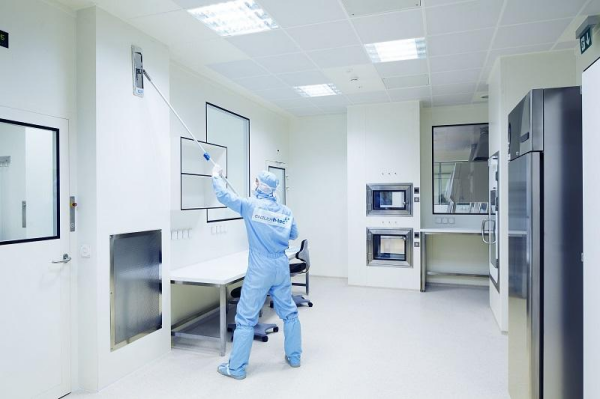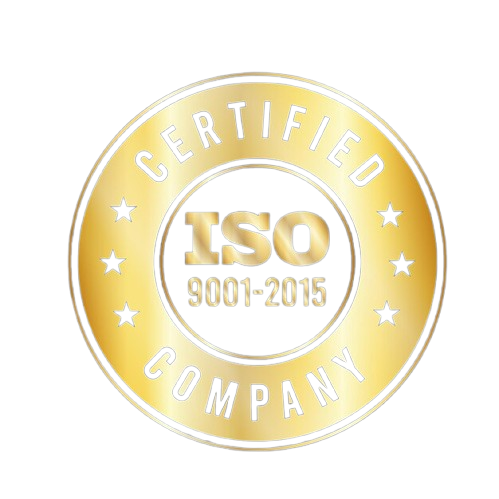Exploring the Impact of Isomers on the Performance of Cleanroom Equipment
Understanding Isomers and Their Importance in Cleanroom Equipment
In the highly regulated world of cleanroom manufacturing, sterility and performance are of paramount importance. Cleanrooms are utilized in industries such as pharmaceuticals, biotechnology, semiconductor manufacturing, and medical device production, where the smallest particle contamination can compromise product integrity. To meet these stringent standards, cleanroom equipment, such as laminar airflow hoods, pass boxes, air showers, and filtration systems, must operate optimally. While cleanroom design and airflow management often take center stage in discussions about cleanliness, the role of materials used in the construction of this equipment cannot be underestimated.
Isomers—molecules with the same chemical formula but different structural arrangements—are integral to the materials that make up cleanroom equipment. The type of isomeric form used in these materials can drastically influence their chemical properties, stability, and interaction with other components. These differences can affect the overall efficiency, cleanliness, and durability of cleanroom equipment.
Wiselink Group, a leading manufacturer of cleanroom solutions, recognizes the importance of isomers in enhancing the performance of cleanroom equipment. By utilizing the right isomeric forms in the manufacturing process, Wiselink ensures that its cleanroom equipment supports the highest standards of cleanliness and regulatory compliance.
In this blog, we will explore the impact of isomers on the performance of cleanroom equipment, detailing how these molecules contribute to the cleanliness, durability, and efficiency of various cleanroom components. We will also look at how Wiselink integrates isomer technology into its products to help businesses maintain a sterile and compliant environment.
What Are Isomers?
Isomers are molecules that have the same molecular formula but differ in the arrangement of their atoms. This structural difference leads to variations in the properties of the molecule. Isomers can be classified into two main types:
- Structural Isomers: These differ in the connectivity of atoms within the molecule, leading to different molecular structures.
- Stereoisomers: These have the same molecular connectivity but differ in the spatial arrangement of atoms or groups within the molecule.
The properties of these isomeric forms can vary significantly, affecting how they interact with other materials, their chemical stability, and their performance in different environments. In cleanroom applications, where precise control over contamination and environmental factors is crucial, isomers play a key role in ensuring that the materials used in equipment construction meet the necessary standards for sterility and functionality.
The Impact of Isomers on Cleanroom Equipment
Cleanroom equipment is subjected to extreme conditions in order to maintain the desired levels of sterility and cleanliness. The materials used in the construction of this equipment must withstand regular cleaning, chemical exposure, and constant airflow. The performance of these materials is influenced by the isomeric forms chosen during the manufacturing process. Here’s how isomers impact cleanroom equipment:
1. Chemical Resistance and Stability
In a cleanroom environment, materials used in equipment construction must resist degradation due to exposure to chemicals, cleaning agents, and environmental factors. Some isomers offer enhanced resistance to chemical attack, ensuring that the equipment remains intact and free from contaminants over time.
For example:
- Isomers with Enhanced Chemical Resistance: Certain isomeric forms of polymers and plastics exhibit superior resistance to solvents, acids, and bases, making them ideal for use in cleanroom equipment such as pass boxes, laminar airflow hoods, and workstations.
- Material Durability: The chemical stability of these materials ensures that cleanroom equipment maintains its integrity and does not release particles or contaminants into the environment.
2. Surface Smoothness and Contamination Control
The surface texture of cleanroom equipment plays a significant role in contamination control. A smooth surface is easier to clean and less likely to harbor dirt, bacteria, or particles. Some isomeric forms of materials offer superior smoothness and finish, which can significantly reduce the risk of contamination.
For example:
- Smooth Polymers: Isomeric forms of polymers such as polyethylene or polypropylene can be engineered to provide smoother surfaces, reducing particle buildup and making it easier to maintain the sterility of the equipment.
- Reduced Particle Release: By selecting the right isomeric form of a material, manufacturers can reduce the number of particles released into the cleanroom, improving the overall cleanliness and performance of the facility.
3. Thermal Stability and Performance
Cleanroom equipment is often subjected to temperature fluctuations as part of the manufacturing process. Isomers can affect the thermal stability of materials used in equipment construction. Some isomeric forms are more stable at high or low temperatures, ensuring that the equipment functions optimally under varying environmental conditions.
For example:
- Isomers with High Thermal Stability: Isomers of materials like silicone and polycarbonate can be chosen for their ability to withstand high temperatures without degradation. This is essential in equipment that operates under heat, such as laminar airflow hoods or sterilization systems.
- Thermal Expansion Control: Certain isomers have a low coefficient of thermal expansion, reducing the risk of distortion or damage to the equipment during temperature fluctuations.
4. Durability and Longevity
The longevity of cleanroom equipment is critical to minimizing downtime and reducing maintenance costs. By selecting the appropriate isomeric forms of materials, manufacturers can enhance the durability and lifespan of cleanroom equipment. Isomers that exhibit greater resistance to wear, tear, and mechanical stress can significantly improve the performance and cost-effectiveness of cleanroom solutions.
For example:
- Isomers with High Mechanical Strength: Materials like stainless steel and certain types of plastic exhibit different mechanical properties depending on the isomeric form used. Choosing the right isomer can increase the tensile strength and impact resistance of cleanroom equipment, ensuring it lasts longer without compromising performance.
- Resistance to Wear: The use of isomeric forms that exhibit superior abrasion resistance is important for cleanroom equipment that undergoes frequent use or is subject to regular cleaning.
5. Compatibility with Other Cleanroom Materials
Cleanroom equipment often interacts with other materials, such as filters, seals, and coatings, during the manufacturing process. The compatibility of isomeric forms with these materials is essential to ensure that the equipment functions properly without causing degradation or contamination.
For example:
- Isomeric Forms with Compatibility: Some isomers of materials like rubber, seals, and gaskets are more chemically compatible with other cleanroom materials, ensuring that the integrity of the equipment and the cleanliness of the environment are maintained.
- Preventing Cross-Contamination: Proper selection of isomers helps prevent cross-contamination between materials, ensuring that cleanroom equipment does not contribute to the spread of contaminants.
How Wiselink Group Utilizes Isomers in Cleanroom Equipment
Wiselink Group understands the importance of selecting the right isomeric forms for the materials used in cleanroom equipment. With years of experience in providing high-quality cleanroom solutions, Wiselink ensures that isomeric materials are carefully chosen to meet the highest standards of sterility, performance, and durability.
Here’s how Wiselink Group incorporates isomers into their cleanroom equipment:
- Customization: Wiselink offers fully customizable cleanroom equipment, ensuring that the isomeric forms of materials are tailored to meet the specific needs of each client’s cleanroom environment.
- Precision Manufacturing: All of Wiselink’s cleanroom products, from laminar airflow hoods to pass boxes and air showers, are made using isomer-optimized materials that ensure chemical resistance, smooth surfaces, and long-lasting durability.
- Compliance: Wiselink’s cleanroom equipment is designed to comply with international standards and regulations, ensuring that the isomeric forms used in their materials contribute to maintaining the highest levels of cleanliness and sterility.
Enhancing Cleanroom Performance with Isomer-Optimized Equipment
The role of isomers in cleanroom equipment is fundamental to maintaining the sterility, performance, and longevity of cleanroom solutions. From chemical resistance and surface smoothness to thermal stability and mechanical strength, the right isomeric form of material can significantly impact the performance of cleanroom equipment. Wiselink Group’s commitment to using the best isomeric forms in the materials used for cleanroom equipment ensures that their clients have access to high-quality, durable, and compliant solutions for their cleanroom environments.




